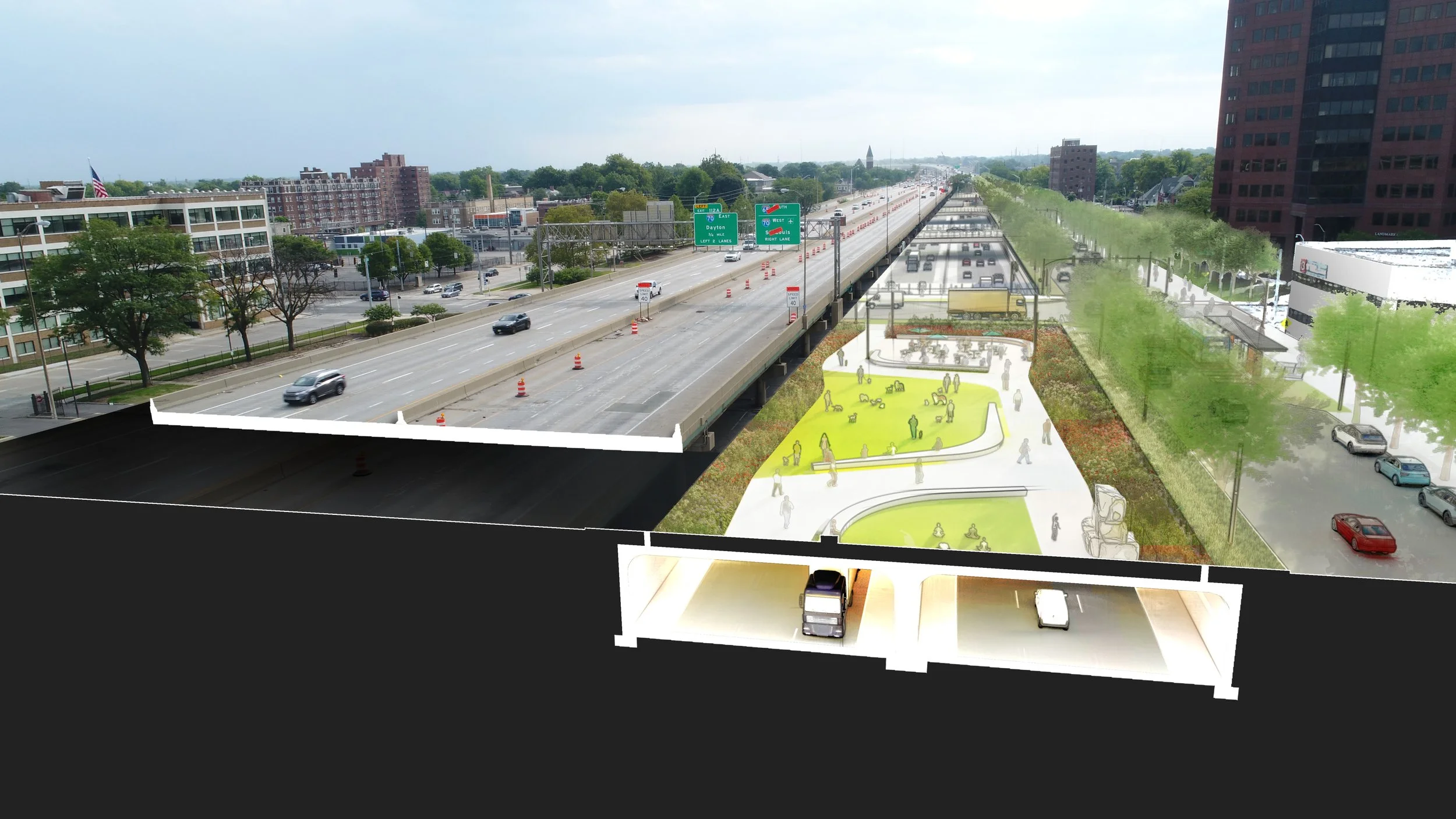
Today is our chance to make a better tomorrow for Indianapolis and Central Indiana
We have a once-in-a-generation chance to reconnect communities, improve quality of life, address justice concerns, and transform our city and region . . . all possible if we recess the I-65/I-70 Inner Loop.
The North Split was just the start. The rest of the I-65/I-70 Inner Loop is nearing the end of its life and will need to be substantially rebuilt. The interstate has created a massive barrier around Downtown Indianapolis. We can transform acres of under-utilized space and unleash limitless opportunities to revolutionize our city. Check out the Visionary Study for more information on this once-in-a-lifetime opportunity and what’s possible with a recessed interstate.
What do we mean by recessing?
North Leg of the I-65/I-70 Inner Loop Rebuilt Recessed
See below for an image-by-image progression. For renderings of other Inner Loop segments see Our Vision
Is this possible?
Yes! Read on to learn what the Visionary Study found in comparing rebuilding the Inner Loop recessed to rebuilding it elevated. See our FAQs for more answers to questions.
What did the Visionary Study find?
An elevated interstate creates an unwelcoming “dead zone,” where culture and business languish. It’s a missed opportunity. We can seize this chance to bring these spaces back to life.
01
A RECESSED INTERSTATE ELIMINATES THE “DEAD ZONE” AND PERFORMS AS WELL AS (IF NOT BETTER THAN) AN ELEVATED INTERSTATE.
The Visionary Study revealed we can meet capacity requirements, allow for similar traffic volumes, and handle congestion during peak periods. Miles traveled would be about the same, either way.
02
A RECESSED INTERSTATE IMPROVES SAFETY.
Not only is it safer for pedestrians and cyclists—this approach eliminates several decision points for drivers, while increasing decision-making time at other key points.
03
A RECESSED INTERSTATE IMPROVES THE ENVIRONMENT
Less noise. Less air pollution. More walking and biking opportunities. That’s only good.
04
A RECESSED INTERSTATE IMPROVES NEIGHBORHOODS.
A smaller urban footprint actually “stitches back together” neighborhoods torn apart by current elevated interstate highways—improving quality of life, access to parks, and opportunities to generate wealth through nearby real estate development.
05
A RECESSED HIGHWAY FREES UP MILLIONS OF DOLLARS FOR INVESTMENT IN NEW GROWTH OPPORTUNITIES.
A recessed interstate can essentially pay for itself, freeing up land for “value capture” —re-establishing communities and spurring development, which could more than make up for its additional (though already relatively minimal) construction cost.
WHAT’S NEW WITH RETHINK
Southeast Gateway Reconnecting Communities Planning Study
Rethink Coalition, in partnership with the City of Indianapolis and with the support of INDOT, was awarded a highly competitive $2 million grant from the U.S. Department of Transportation (USDOT) to study design alternatives for capping the Virginia Avenue “South Split” where the Inner Loop is already partially recessed.






